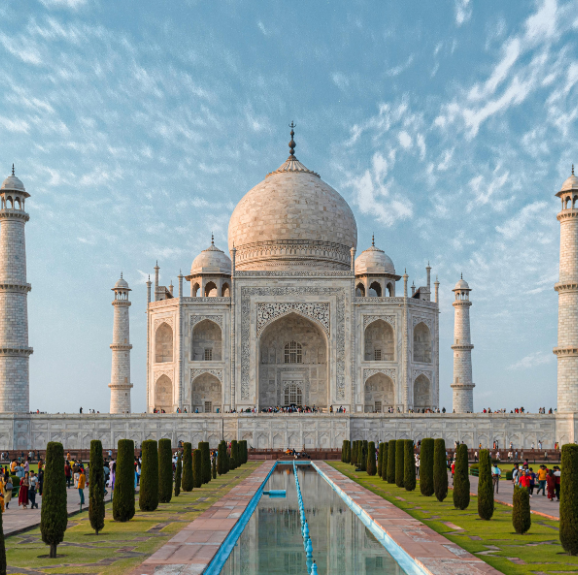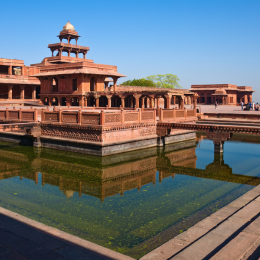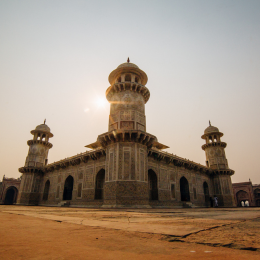Agra, located in the northern state of Uttar Pradesh, India, is one of the most iconic cities in the world, renowned for its rich Mughal heritage, stunning architectural landmarks, and deep cultural significance. Situated along the banks of the Yamuna
River, approximately 206 kilometers (128 miles) south of New Delhi, Agra draws millions of visitors annually due to its historical importance and its association with the Taj Mahal, one of the Seven Wonders
of the Modern World and a UNESCO World Heritage Site. The city's vibrant past as a seat of power, art, and culture makes it a mesmerizing destination for history enthusiasts and travelers alike.
Agra: The City of the Taj Mahal
Uttar Pradesh, India



Overview
Historical and Spiritual Significance
Agra’s history is both ancient and vibrant. References to the city appear in the Mahabharata, an ancient Indian epic, where it was referred to as "Agravana." However, Agra rose to prominence during the Mughal Empire in the 16th and 17th centuries. Under
Mughal emperors such as Babur, Akbar, Jahangir, and Shah Jahan, Agra became the heart of political, cultural, and architectural development. The Mughals transformed the city into a hub of grandiose architecture,
art, and culture, establishing Agra as the capital of their empire during the reigns of Akbar and Shah Jahan. The city flourished under Mughal rule, becoming a symbol of imperial power and artistic achievement.
Key Attractions
Taj Mahal
Agra Fort
Fatehpur Sikri
Itmad-ud-Daula (Baby Taj)
Mehtab Bagh
Tomb of Akbar the Great
Jama Masjid
Agra is not just a city of monuments; it is also a vibrant cultural hub. The city's culture is deeply influenced by its Mughal heritage, and visitors can experience traditional Mughal crafts such as marble inlay work, leather goods, carpets, and brassware.
These handcrafted products can be found in Agra's bustling bazaars and markets, where artisans showcase their skills.
Cuisine in Agra is a delightful blend of Mughal and local traditions, offering rich, flavorful dishes. Some of the local specialties include:
- Petha: A sweet made from ash gourd, popular in Agra.
- Mughlai Cuisine: Mutton Korma, Seekh Kebabs, and Chicken Kofta are common Mughlai dishes served in Agra.
- Chaat: Agra's street food scene is vibrant, with stalls offering Samosas, Aloo Tikki, and Pani Puri.
Agra experiences a hot semi-arid climate with three distinct seasons:
Summer (March to June):
- Temperatures can rise above 40°C (104°F) during the peak summer months.
Monsoon (July to September):
- The city experiences moderate rainfall, which offers some relief from the summer heat.
Winter (October to February):
- Winters in Agra are cool and pleasant, with temperatures often dipping below 5°C (41°F) in December and January.
Conclusion
Agra is a city where history, culture, and architecture come together to create a unique and awe-inspiring experience. Home to the world-renowned Taj Mahal, as well as other historical sites such as the Agra Fort, Fatehpur Sikri, and Itmad-ud-Daula, the
city is a living testament to the grandeur of the Mughal Empire. Agra’s cultural heritage, coupled with its vibrant markets and delicious cuisine, makes it one of the most enchanting cities in India. Whether
you're marveling at the beauty of the Taj Mahal, exploring the majestic Agra Fort, or strolling through the city's bustling streets, Agra offers a journey through time and art that is unmatched.

